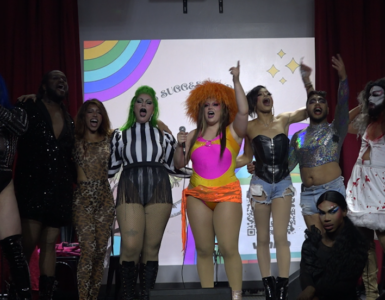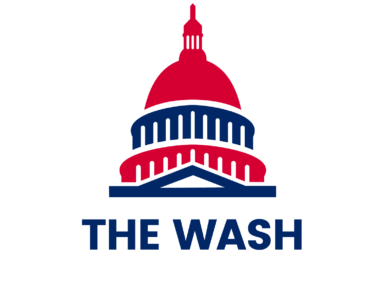The old Alexander Crummell School, built in 1911, served as the elementary school for many black children in Ivy City and the neighboring Trinidad neighborhood from 1912 to the early 1970s. But in 1980, the school was abandoned.
Now, as businesses, restaurants, and apartment complexes expand their growing shadow over its crumbling red brick walls, Ivy City residents want to turn the old school into a community center.
Competing Proposals
In 2015, Mayor Muriel Bowser launched the city’s first “March Madness”, an event that encouraged local developers to pitch ideas for economic development projects. The District had seen a surge of development in recent years and the project served as a way to distribute positive growth around the city.
In Ivy City, residents capitalized on the opportunity and submitted a proposal to develop a community gathering space in the Crummell School and its surrounding land. Two proposals pushed their way to the forefront — one by local advocacy group Empower DC and Ivy City Partners.
Empower DC has worked in Ivy City for the last several years, working with many of the neighborhood’s young people to put forward its proposal, said Parisa Norouzi, the organization’s executive director. “There’s no rec center, there’s no place for the kids to play,” Norouzi said. “It’s been a centerpiece of what this neighborhood has been asking for.”
Empower DC’s proposal focused on public amenities. It included a computer lab, daycare, library kiosk, greenspace, a basketball court and other amenities and reserved 67,500 square feet for retail and office spaces.
The Ivy City Partners proposal opted for more residential and retail space. Still, though, it included a community center and greenspace. The consortium of developers and the local Ivy City business, ProFish, spearheaded the design, which would place ProFish’s processing plant underground.
Greg Casten, the owner of ProFish, said the Ivy City Partners proposal would not cost the city. Partners would front the money to turn the school into a community center, which was originally estimated to cost $14 million, Casten said.
“I think we had the best proposal, by far,” Casten said. “I think it also brought a gateway between a residential neighborhood and a commercial neighborhood, and I think that it really answered all the issues and gave the control of the school and the property around it back to the city so they could decide with the community what was best activation of that site.”
Casten said the neighborhood began transforming from an industrial-centric area to a residential one after the Hecht Warehouse, a massive warehouse in Ivy City, reopened as an apartment complex in 2016.
“Once the city did that, I think they really decided that they didn’t want this to be industrial, they wanted it to be residential with an industrial feel and some makerspace,” Casten said. Developing the Partners proposal would “make the transformation work.”
Adding more greenspace, he said, is something he’s willing to discuss. Bowser agreed. In a press release published by the mayor’s office, Deputy Mayor for Planning and Economic Development Brian Kenner lauded the “high level of engagement” from the greater D.C. community when announcing the winning proposals for the Crummell School and another project.
“We are excited about both development plans that will bring much needed jobs, housing, retail, dining and public space to the hearts of both of these communities,” Kenner said in the release.
No Place to Play
Despite the outcome, Empower DC says it will continue to fight for its proposal. Ryan Linehan, the newly elected commissioner for ANC 5D01, is also joining in the fight. Both parties say the need for greenspace and a space for children to play is essential for the growth of the community.
Linehan, a football coach at McKinley Tech High School moved to Ivy City about three years ago and put up a basketball hoop outside his home. He said he knows how important it is for children to have a place to play and encourages neighborhood residents to use it.
“It was nice … seeing kids playing on the street and that strong sense of community,” Linehan said. “Kids definitely need a place where they can blow off some steam and have some physical activity.”
Linehan’s hoop the closest thing the community has to a basketball court. The only other open communal space is a small park a couple blocks from the school. But the park is also a drainage field and is often flooded. According to Norouzi, it’s also become a haven for drug use, so a lot of the area children avoid it.
Without a rec center or outlet for the area children, Norouzi said many of them getting into trouble and being sent to the area juvenile-detention center.
A Long History
Named for Rev. Alexander Crummell, an African-American educator, abolitionist and contemporary of Frederick Douglass and W.E.B. DeBois, the school was the center of one of the District’s oldest black communities.
Steven Padgett, who moved to Ivy City in 1966, graduated from six grade at Crummell in 1971. In an Empower DC video, Padgett said he could still name every teacher he had at the school and said the school helped foster a sense of community in the neighborhood.
“We all over here knew each other,” Padgett said. “We were like a close-knit family. Like one big, happy family reunion around here.”
Detrick Ealy, 42, has lived in Ivy City nearly his entire life, and said the neighborhood has changed dramatically in recent years after many of the businesses started to move in. Despite the changes, Ealy said the neighborhood remains close and the people get along well.
“It’s a melting spot,” Ealy said. “We have the integration of white, black and Hispanic, and we all get along.”
A Brief Reopening
Since closing its doors in the early 1970s, Crummell has largely been abandoned.
There was a brief period in the late 1970s when the Institute Cultural Affairs, an organization that does improvement projects worldwide, reopened the school as a community center as part of its Human Development Projects during the bicentennial. The center had a print shop and a preschool in an annex building, Norouzi said.
Shortly after the ICA left, the annex caught fire and the main building was looted, Norouzi said.
“The whole thing kind of fell apart,” Norouzi said.
The fight for a community center isn’t the first battle waged over the Crummell School in recent years. In 2012, then-Mayor Vincent Gray announced a plan to turn the lot into a bus depot for 65 buses that traveled between D.C. and New York City. Empower DC and Ivy City residents fought back, sparking the “Let Ivy City Breathe” movement and filing a lawsuit.
Ivy City won the fight after a judge granted an injunction, preventing the depot from operating. Still, the city paved every inch of the lot, aside from the school building itself, which was added to the National Register of Historic Places in 2012. The District eventually abandoned the bus depot idea.
Looking Forward
As one of the District’s oldest neighborhoods continues to change, the need for a community center becomes even more pronounced, Norouzi said. New retail, high-end restaurants and apartments are moving in, supporting a long-occuring fear that continued development might drive current residents out.
“Ivy City has been one of those last affordable places in the city,” Norouzi said. “Now with this area becoming more expensive, there’s not a lot of places left for people to go.”
Ivy City has recently been billed as an “up-and-coming” neighborhood for young adults, Norouzi said, with the arrival of new businesses in the area, like New Columbia Distillers and Atlas Brew Works.
“That’s something that you really see clashing,” Norouzi said. “All these places for adults, and there’s still nothing for the kids. This is a neighborhood with a lot of kids.”






Add comment